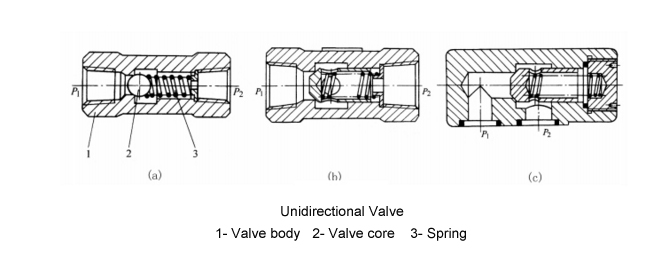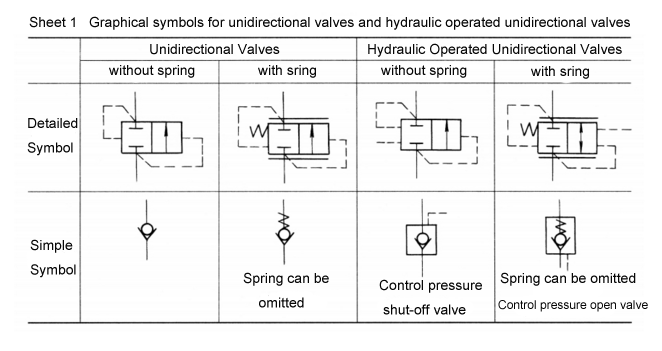Product Series
News
What is Unidirectional control valve of the hydraulic seal component?
Update:2018-07-04
The valve in the hydraulic seal that controls the flow direction of the oil is called a directional control valve (referred to as a directional valve). Commonly used directional control valves have intentional valves and reversing valves
Unidirectional valve - one of the hydraulic sealing ring components
The unidirectional valve (one of the hydraulic seal components) is a directional control valve that ensures that the flow of the valve through the valve flows only in one direction and does not flow backward. Generally, it is composed of a sealing body such as a valve body, a valve core, and a spring (Fig. 1)

When the pressure oil enters from the oil inlet P1, the valve core 2 is opened and flows out through the oil outlet P2. When the flow is reversed, under the action of the spring 3 and the pressure oil, the spool is pressed against the valve body 1 to cut off the passage so that the oil cannot pass.
According to the use characteristics of the unidirectional valve, it is required that the resistance is small when the oil is passing, and when the liquid flow has a reverse flow tendency, the closing action is sensitive, and the sealing is better after closing. Therefore, the spring is usually very soft, and the opening pressure is generally only 3.5×104 - 5.0×104 Pa, which is mainly used to overcome the friction.
The valve core of the unidirectional valve is divided into two types: a steel ball type (shown in Figure 1) and a cone type (Figure 1). The steel ball valve core has a simple structure, low price but poor sealing performance, and is generally only used in a low pressure, low flow hydraulic system. The cone type valve core has small resistance, good sealing performance and long service life, so it is widely used in high pressure and large flow hydraulic sealing systems.
Two types of unidirectional control valves (Figure 1) and plate connections (Figure 1) in the hydraulic seal. The tubular connection unidirectional valve is made into the pipe thread by the inlet and outlet ports, and is directly connected with the pipe joint; the plate-connected check valve has a port with a cylindrical hole with a flat bottom bore and is fixed by screws. On the bottom plate. An O-ring is placed in the flat bottom bore, and a threaded connection is made between the bottom plate and the pipe joint. Other types of control valves are also available in tubular and plated connections.
In the transmission system of the hydraulic seal ring, it is sometimes necessary to re-connect the oil circuit blocked by the intended valve. For this purpose, the check valve can be made into a structural diagram in which the lock direction can be controlled, which is a unidirectional valve for the hydraulic seal control. It is.
The hydraulic controlled unidirectional valve in the hydraulic seal can also be made into a form of structure, that is, the oil passage is normally unblocked, and the oil flow in one direction by the liquid control is required to be closed, so that the oil can only flow in one direction (Table 1).

